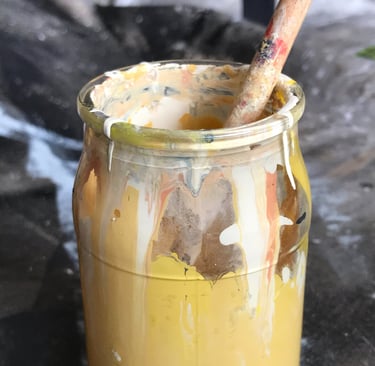5 'Musts' When Buying Paint
...they'll impact your health & home
DECORATINGENVIRONMENT
Choosing the right paint for your home can be challenging. With so many out there, it's important to consider not only the colour and finish but also the impact it can have on your health and home. I found some brands provide this information better than others. So here are 5 things you need to do when buying paint:
1. Check the chemical - VOC content
I’ll have a separate blog on VOC’s, but for now, Volatile Organic Compounds (VOCs) are chemicals found in paint. They can be harmful to our health and can contribute to indoor air pollution. Low VOC (<50g/l) can still omit chemicals during the application stage (and up to 72hrs afterwards). Zero VOC are paints with <5g/l, but even with no or low VOC, these paints may still contain other harmful chemicals, so avoid chemicals such as:
Benzene, toluene, ethylbenzene, and xylene, which are among the most common VOCs known to pose risks to human health [ref]. Other harmful compounds include halocarbons and oxygenated hydrocarbons, such as styrene (vinyl benzene).
Many companies say their paints are low in VOCs but don't have the actual content information on their websites or products, so ask! The EU Paints Directive (2004/42/EC), states that interior matt paint should be <30g/l, for other levels, click here.
2. Odour
The smell of fresh paint can be overpowering and unpleasant. If you or your family members are sensitive to strong odours, consider choosing a paint with low odour or odourless options. If the latter is not possible, try opening windows and doors to allow air circulation, this will make the painting process more enjoyable and reduce the risk of headaches or respiratory issues.
3. Durability
When buying paint, it's important to consider the durability of it. Will it withstand scrubbing and cleaning, resist stains and fading? Look for paints that are specifically designed for high-traffic areas or for use in kitchens and bathrooms where moisture can be an issue, otherwise the humidity will cause the paint to peel in the future.
4. Eco-Friendly Options
If you're concerned about the environmental impact of paint, there are eco-friendly options available. Look for paints that are made from natural ingredients like lime or that have been certified as environmentally friendly. These paints are not only better for the planet but also for your health, but check its VOC content.
5. Colour Accuracy
Lastly, when choosing paint, consider the colour accuracy. Paints look different in the store and even the colour charts than they do in your home. Time of day, room orientation/size and the surface being painted can all affect how the colour will look. To ensure you get right colour/shade, try samples. Rather than paint walls, paint a piece of A5 white paper so you move it around. Then decide which colour is best.
By considering these five factors, they'll help when decorating your space/home but also prioritise your health and the environment.
FREE DOWNLOADS: English or Portuguese versions.



